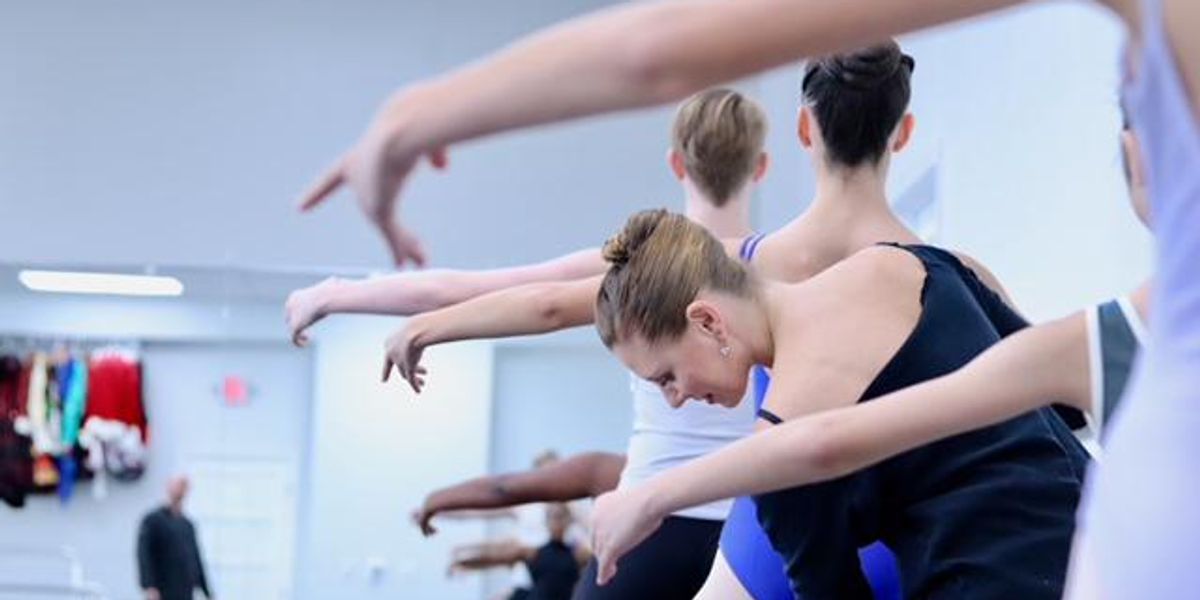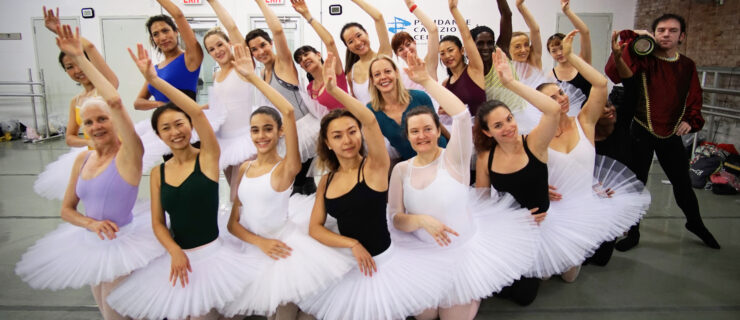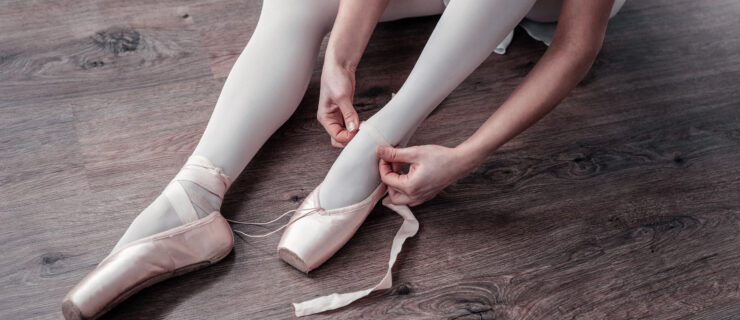COVID-19 Has Made It Easier to Train Outside Your Studio—but Should You?
Of all the unprecedented effects the COVID-19 pandemic has had on the dance world, perhaps the most unthinkable a year ago was the forced pivot to online training. With many studios mandated to close, we’ve outfitted our homes with barres and marley and harnessed technology to create more learning opportunities than ever before. And now, as some studios reopen for in-person classes (either fully or in hybrid form) and others remain online, it’s easier to supplement your school’s offerings by adding virtual master classes—or even going to another school for in-studio time. But while being able to take class from anyone, anywhere, offers great opportunities, there are pitfalls to jumping from teacher to teacher. It’s important to balance out the pros and cons of creating your own “COVID curriculum.”
Balance Opportunity and Consistency
Some virtual classes can feel more fun than others—Instagram Live with a celebrity dancer can be an exciting contrast to the familiarity of your regular Zoom classes. But for a lot of students, the combination of isolation and inadequate space at home becomes a huge struggle. As some schools reopen for in-person classes while others remain fully online, the urge to grab a chance at studio time elsewhere is real.
“Some students are having a really difficult time with online training,” says Erica Fischbach, director of the Colorado Ballet Academy, which has been mostly virtual since last March. While the Academy’s policy prohibits students in the pre-professional program from taking outside classes, Fischbach has cautiously allowed it during the pandemic, within strict parameters. “If a student comes to us and is really struggling, we’ve said it’s okay to go to another studio to take classes—so long as CBA is still virtual, it does not conflict with their current classes, and they are not overtraining.”

Mark Hutchens, Courtesy Colorado Ballet
Fischbach fully recognizes how beneficial the vast array of online classes can be for young dancers, too, so long as they’re taken judiciously in conjunction with their primary school’s schedule. “There are wonderful classes out there, from amazing teachers. I’m 100 percent on board with students seeking out excellent training on their off time—but not by skipping their regular classes.”
Since adding too many hours on top of your studio’s class schedule can make you vulnerable to injury, Fischbach suggests using semester breaks to explore new options. “If you’re taking extra class somewhere else and then come to us and sit out because something hurts, that’s a problem,” she says.
Consistency Versus Variety
Students seek out supplemental virtual training for various reasons. Pre-pandemic, Miami-based Veyette Virtual Ballet School mostly worked with students seeking individual attention missing at their primary school, whether to prepare for a competition, learn the nuances of a different style, or simply gain confidence through one-on-one coaching. While VVBS has since added group classes for those wanting to train with them under a more consistent schedule, directors Lauren and Francis Veyette are still very careful in how they guide private students who attend another school full-time. Finding a balance between variety and consistency is crucial, they say. “I think any teacher has a little bit of tunnel vision; even the best teachers may not see every little detail,” says Francis. “Having a diversity of opinion can be valuable. On the other hand, if you take class from a different teacher every time, you’re not going to get the chance to really work on the corrections each one emphasizes.”

Ariel Rose, Courtesy Veyette Virtual Ballet School
Input from multiple teachers, whether virtually or in-person, can also become confusing. Certain technical aspects hold true across styles—straight knees, properly held turnout—but be careful not to bring specific affectations into a class that will clash with that teacher’s aesthetic. VVBS gets students wanting to learn Balanchine-style movement. “An important distinction we make for them is that if you want to learn this type of technique, here it is. But you know your own teacher’s temperament, so if they have a potential bias against this style, don’t carry it into their class.”
Be aware that bouncing around from teacher to teacher—particularly on platforms like Instagram or YouTube, where they can’t offer tailored corrections—can result in imitation rather than understanding. Think about what you want to get out of an online class, says Lauren. “It’s exciting to see a celebrity teacher, but realize that it takes a lot longer than one class to actually learn something. If you’re classically trained and want to learn more Balanchine style, you’re not going to get that from one Instagram class.”
Getting the Most Value from One-Off Classes
When taking a one-time class, consider how the teacher’s perspective can complement and augment the training you’re already getting, not replace it. Jessica Lynn, a sophomore at the University of Oklahoma majoring in ballet performance and journalism, took virtual master classes on several platforms over her winter break, including ones on Zoom from Peter Stark and Cynthia Harvey. She feels those in particular reminded her how to use speed, plié and movement dynamics in different ways, elements she finds applicable to her OU classes.
But the one-time classes also gave her a taste of being a professional. “As I’ve gotten older, giving myself corrections is more important than ever,” says Lynn. “That’s something I’ve learned to employ from the Instagram Live and other online classes. Not having hands-on specific instruction is challenging, but I think that’s indicative of how it’s going to be in the professional setting.”

Sarah Cermak, Courtesy Lynn
Explore Smartly
If you want to explore outside your main studio’s curriculum, whether in person or online, first determine what you’re looking for and why, and question whether you’re likely to find it. Learning a different style and progressing your technique are long processes which are most successful with faculty who are dedicated to you, says Fischbach. If you’re itching for something more, talk to your main teacher first about finding it where you already are, whether that means private lessons or more targeted help in class on the area you’re craving to develop. Fischbach says she always wants to hear from students so she can help them find solutions.
Remember, too, that there is light at the end of the COVID-19 tunnel, and your current frustrations may be tied to a situation that will soon change. “There are right and wrong ways to supplement your training right now,” Fischbach advises. “First communicate with your home school— sneaking around just creates ill will. Your teachers are invested in you, love you and want to see your happiness. They want to know about any issues you’re having and help you find a path to success.”






